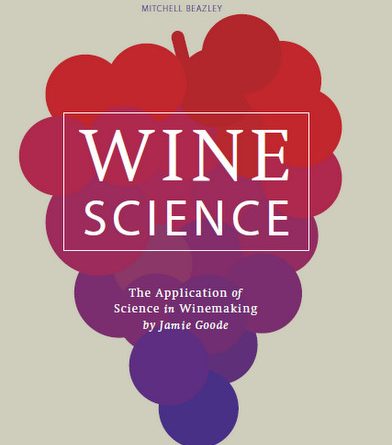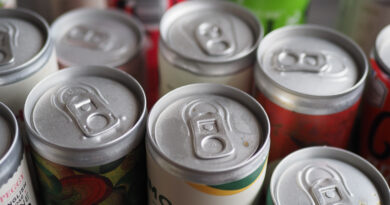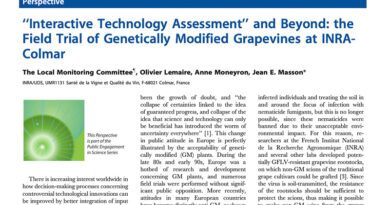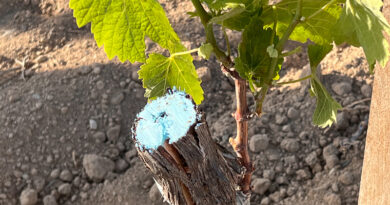Advances in wine science: what have the scientists done for us?
I’m a scientist, but—as Andrew Jefford so nicely put a few years back when reviewing my wine science book—I’m not a scientific fundamentalist. Science is just one of the lenses we can use to examine wine with, and there’s still a great deal about wine that science can’t really explain. Most of the world’s great wines are not made by technicians, but by artisanal wine growers, working empirically. They observe; they experiment; they understand.
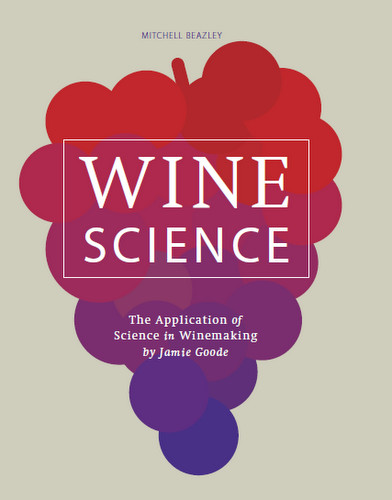
We still don’t have a good scientific explanation for why the wines of, say, Domaine de La Romanée Conti’s Grand Cru vineyard sites in Vosne-Romanée are so fabulous, while a few hundred yards away, very similar-looking vineyards produce rather ordinary wine.
The category of natural wine also creates problems for wine scientists: all that we know about wine science suggests that wines made without any addition of sulfur dioxide should be awful, but natural wines are frequently thrilling. It’s a bit of a mystery.
And what about biodynamics? Some of the world’s smartest wine domains have improved their wine quality by farming this way, but science is at a bit of a loss to explain how some of biodynamie’s anti-scientific practices could be having much effect.
While science is just one way of seeing the world, it is incredibly powerful, if, as a tool for understanding, it is used effectively. Some of the problems wine science has run into have been down to the fact that the wrong sorts of questions have been asked by those who don’t really understand interesting wine. In the right hands—those of a curious, committed winegrower—science has the power to help people make more interesting wines more consistently. Sadly, it has largely been used to make cheap wine more consistent, and more cheaply.
In this article I’m going to pick some of the recent advances in wine science, and try to explain why I think they have been so significant. I’ll also be casting an eye to the future, to suggest ways in which wine science might progress.
Post-bottling wine chemistry, and wine bottle closures
This sounds really dull, doesn’t it? But it’s probably the single biggest contributor to improvements in wine quality that have taken place over recent decades.
Twenty years ago cork had pretty much a monopoly position as the wine bottle closure. And cork was doing a really bad job. In particular, the Australians were getting fed up with the quality of corks they were being sold. Depending on who you talk to, up to 10% of their wines were being spoiled by cork taint and/or early oxidation because of problems with corks. The search for an alternative became a serious one.
Initially, plastic corks were tried. The first-generation synthetics were injection-moulded plugs that were much less effective than their modern counterparts. Despite their drawbacks (one of which was that they were quite hard to remove from the bottle), they achieved limited success from the mid-1990s onwards. The other main contender was the screwcap. Screwcaps had been tried in Australia in the mid-1970s, but had failed to win over consumers.
They made their comeback in 1999, when Orlando decided to bottle a high-end Riesling under both cork and screwcap. The screwcapped bottles outsold the cork sealed ones by far. Then in 2000, a bunch of Clare Valley producers banded together and bottled their Rieslings under screwcap, accompanying their launch with a big media splash. New Zealand producers also rushed to bottle their fresh Sauvignon Blancs under this new closure.
But what of the science of closures? At this stage, everyone pretty much assumed that the job of the closure was to seal the bottle, to stop air coming in and wine getting out. What they didn’t realize was the critical role played by the closure in allowing a very small amount of oxygen transmission, and the potential impact this would have on the wine. It was a pioneering study by the Australian Wine Research Institute (AWRI), beginning in 1999, that opened everyone’s eyes to the fascinations of post-bottling wine chemistry.
This study involved the same wine – a 1999 Clare Valley unoaked Semillon made by Leasingham’s Kerri Thompson – sealed with 14 different closures. These bottles were sampled at regular intervals and subjected to both chemical and sensory analysis. The long and short of it is that the synthetic corks used in the AWRI study allowed too much oxygen transmission, resulting in premature ageing and then oxidation of the wine.
The natural corks were better, but varied quite a bit and tainted some of the wines. The technical corks were better than the natural corks in terms of oxygen transmission – they were consistent and kept the wines a bit fresher – but they too suffered from taint issues. The screwcap performed best in terms of keeping the wine freshest and most youthful, but allowed so little oxygen transmission that a subtle reductive flint/rubber note appeared in the wines.
It should be pointed out that with a screwcap, the oxygen transmission rate is determined by the liner, and two are commonly used for wines, with rather different properties. The trial here used one with a metal layer in it – as in fact almost all the screwcaps used in Australia and New Zealand have. This allows very little oxygen transmission at all. The Saranex-only liner, the other one commonly used, allows a bit more: less than a typical synthetic cork but a bit more than a typical natural cork.
The conclusion from the trial is that winemaking extends beyond bottling. The oxygen transmission rate of the closure that you choose will affect the sensory properties of your wine after bottling. It is just not possible to freeze a wine in time by using a hermetic (totally air-tight) seal such as sealing a wine in a glass ampoule. The wine will always change after bottling, and the key issue is to choose a closure with the oxygen transmission rate that suits the wine (if you know the intended point of consumption).
Now, of the approximately 18.3 billion bottles sealed each year, alternative closures account for some 5.7 billion units. As a result of the emergence of alternative closures, winemakers are now aware of the importance of oxygen transmission through the closure, the impact of oxygen at bottling, and the processes that occur post-bottling in terms of wine chemistry. And cork manufacturers are now trying hard to reduce the rates of taint in their products.
The science of sustainable viticulture
This is a biggie. Think back 20 years. Most vineyards were clean cultivated with herbicides, kept verdant green with chemical fertilizers, and protected from disease by systemic fungicides. They looked lovely. The concept behind this ‘old viticulture’ was to see the vine – the crop plant – as the focus of all the attention, with the soil viewed merely as an inert medium to supply the necessary nutrients and water for vine growth.
So welcome to the ‘new viticulture’. There has been a change in the way that many of the more enlightened growers are seeing their vineyards. They are now rightly viewed as agroecosystems, with many organisms working together of which the vine is but one. In particular, the rich microbial life of the soil is now appreciated as being of great importance.
It’s is not just the organic and biodynamic growers who realize that these agroecosystems matter in their entirety, but also conventional growers who are choosing to work more sustainably. The science of integrated pest management/integrated farm management is now pretty mainstream, and is informing the decisions of growers worldwide. Vineyards are becoming much healthier places, with the life of the soil respected, and elegant biological solutions to pest and disease pressures preferred to ‘magic bullet’ chemical approaches.
It’s really encouraging to see certified sustainable viticultural programs roll out around the world. In New Zealand, the Sustainable Viticulture program has a huge take up, and has resulted in massive reductions in agrochemical use across the industry. In South Africa, the Integrated Production of Wine program is beginning to take off.
Oregon has a sustainable wine certification program that brings together a number of differing certifying bodies to make a message that is more easily communicated to consumers. And Chile is currently working towards developing an independently audited sustainability program. ‘Sustainable wine’ might not be as sexy as biodynamics, but it has the potential to help the environment – and improve wine quality as the result of better viticulture – on a much larger scale.
Wine flavour chemistry and the perception of wine
Our understanding of wine flavour – in terms of both its perception by humans, and also its basis in wine chemistry – has changed a great deal in recent years. This is a hugely interesting area of study that crosses disciplinary boundaries, and even takes in philosophy and psychology.
Wine is a complex chemical soup. Many of the chemicals in wine have smells and tastes. But to unentangle which of these chemicals is most significant is a complicated process, because they interact in additive ways, there are masking effects, and subthreshold levels of some chemicals affect the perception of others. The old fashioned idea is that we can understand the flavour of wine by simply working out which odour- or taste-active chemicals are present above their threshold levels in a sort of additive fashion, but this isn’t the case.
One very interesting recent set of studies involved taking the volatile compounds out of a wine, leaving just the volatile matrix. Then the volatile compounds can be added back leaving some out, to see what impact these missing compounds have. This sort of approach is throwing up some surprising results. In a twist on this theme, researchers have shown that a wine made up of a red wine non-volatile matrix and white wine volatiles smells like a red wine, and vice versa. It’s fascinating stuff.
The human perception of wine is really interesting, too. We now realize that tasting wine involves multisensory perception, with contributions from the tongue, nose, eyes and even ears. Touch is another sense that plays a part. All this information is recombined in the brain and by the time we are aware of it, a lot of processing has already taken place. Our knowledge or previous experience also shapes the actual perception of the wine that we have.
In addition, individuals differ in their sensitivity to various wine flavour compounds. A good example is rotundone, a sesquiterpene that has recently been identified as contributing the peppery flavour found in red wines such as cool-climate Syrah. One fifth of people simply can’t detect this at all. There is also work on taste, showing that around a quarter of people are ‘hypertasters’, exquisitely sensitive to bitter compounds in particular. Likewise, a quarter of the population aren’t very sensitive at all to bitterness.
Lots of work has taken place on Sauvignon Blanc, which is in effect a ‘model system’ for wine. Researchers have shown that the distinctive aroma of wines made from this variety is largely down to the presence of two classes of ‘impact’ compound. First, there are methoxypyrazines, which have green pepper/grassy flavours and are present in the grapes at harvest, surviving fermentation intact.
Then there are three polyfunctional thiols, sulfur-containing compounds formed during fermentation by precursors present in the must: 3MH, 3MHA and 4MMP. These contribute attractive passionfruit, grapefruit and boxwood aromas. Other compounds involved in Sauvignon aroma include the various fruity smelling esters, leafy smelling C6 aldehydes and alcohols, and terpenes. Work is underway to connect up wine chemistry with viticultural and winemaking interventions. It’s exciting to see this level of understanding emerge, with contributions from sensory scientists, analytic chemists, molecular biologists, microbiologists and plant physiologists, as well as the wine industry itself.
Understanding the role of oxygen in wine
So, with a view to the future, I’m going to pick two fields that I think will be particularly influential. The first is that of understanding the role of oxygen in winemaking and beyond. This is an area of intense current research, but lots remains to be discovered. Advances in protecting wine from oxygen – reductive winemaking – have already permitted winemakers to make wines that a generation ago simply weren’t possible.
Warm climate wine regions can now make whites and unoaked reds with incredible freshness of purity of fruit, largely because of the availability of refrigerated stainless steel tanks and inert gases. But while protecting wines from oxygen has been a powerful tool for shaping wine style, the appropriate exposure to oxygen is also important for making some wines.
Traditionally this has been achieved through the use of barrels. More recently, microoxygenation coupled with the use of barrel alternatives has attempted to replicate this. But microoxygenation is a bit of a dark art, and the doses delivered are likely much higher than those delivered by oak barrels, although they are delivered over a shorter period. Could it be that it is not just the dose of oxygen delivered, but also the rate, that is critical in terms of the sensory outcome?
Inexpensive luminescence-based tools are now available for monitoring oxygen, and the hope is that studies looking at the effects of different oxygen regimes—both during winemaking and post-bottling—on a range of wines, tracking both chemical and sensory targets, could help reveal the optimal oxygen management techniques for different styles of wines.
Genetic modification of yeasts and vines
The second field for the future is the genetic modification of yeasts and grapevines. This is highly controversial, of course: many consumers simply won’t accept wines made from GM vines or yeasts. As a scientist, I see GM as a very powerful tool, which can be used for good or evil.
The evil use is to produce pesticide and herbicide resistant vines, and then nuke the vineyard with these chemicals to eradicate all other life. The good use? Well, GM is the only way you can make existing varieties (which we very much like) resistant to the ravages of oidium and downy mildew, which make spraying necessary if a crop is to be achieved.
So GM vines could be much more environmentally friendly – there certainly seem to be no safety issues. The problem with GM vines is that they’d be expensive to produce, and therefore we could end up with increasing focus on just a few varieties worldwide, which would be bad news indeed. GM yeasts are already with us. There are currently two of them being used in the USA. Most other countries won’t allow them. One is a very low sulfide-producing strain that also produces reduced levels of ethyl carbamate (although the manufacturers claim that this is not technically a GM yeast); the other does malolactic fermentation at the same time as alcoholic fermentation.
Lots of work is currently going on to produce a yeast that makes less alcohol from the same amount of sugar in the must: now this would be really useful. Whether we like it or not, the issue of GM organisms in wine is not going to go away.
So this is just a quick overview of some of the more important contributions of science to wine. If I can be permitted to dream a little, if I had a gazillion dollar research budget, I’d use it for a number of related projects. I’d love to understand what exactly it is about terroir and viticulture that makes great vineyards capable of producing great wines. I’d like to know why biodynamic winegrowers are having such effect. I’d love to know why so many natural wine show brilliant elegance and complexity. And I’d like to use this knowledge to help more growers do the same, making thrilling wines at prices that even the modestly well off can afford. A truly egalitarian vision of the wine world’s future!

